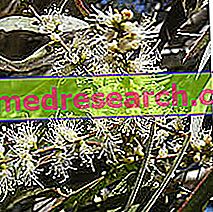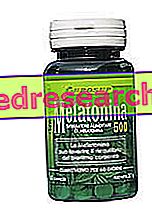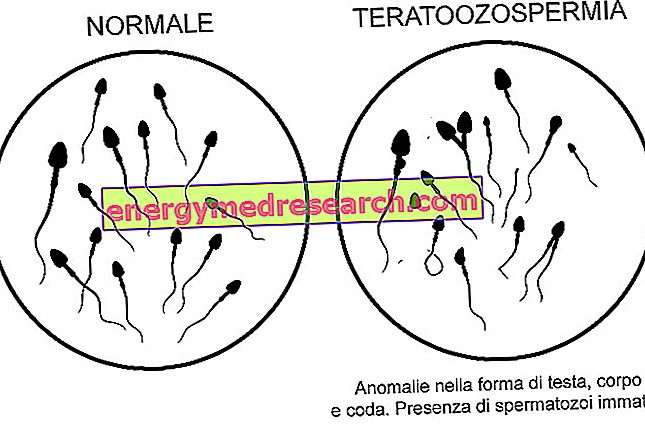Carpal tunnel syndrome is a disease that affects the peripheral nervous system of the hand and fingers.

The triggering elements can be numerous and of various kinds; usually, they all lead to the aforementioned compression of the median nerve.
Although manual activities cause acute symptoms, it has not yet been demonstrated that they can directly cause this discomfort.
Carpal tunnel syndrome can affect anyone but seems more common in women and middle-aged subjects (45-60 years).
It can be a very disabling ailment, especially when not treated quickly.
What to do
- It is necessary to remember that carpal tunnel syndrome is a disease that can be prevented and partly hindered (see Prevention).
- First of all it is necessary to recognize the symptoms; these concern the wrist, hand and fingers and are:
- Sense of numbness.
- Tingling.
- Ache.
- Secondly: pain in the forearm, paresthesia, dry skin and swelling, hypoesthesia, weakening of the thumb muscles, difficulty in manipulating objects.
- Other factors that characterize carpal tunnel syndrome are:
- The tendency to accentuate the symptoms at night.
- The predisposition to worsen over time.
- With the suspicion of this disease it is advisable to contact the doctor, who:
- It will carry out an accurate objective examination (sufficient in most cases).
- If necessary, it will prescribe a more specific examination such as electromyography (EMG).
- WARNING! If the clinical picture is atypical and a differential diagnosis is needed, the doctor may prescribe other tests such as:
- Electroneurography.
- X-ray.
- Blood tests.
- In case of positivity, evaluating the severity and extent of symptoms, a specialist will evaluate the most suitable solution:
- Conservative therapy: used especially when the symptoms are moderate, bearable and present for a few months.
- Surgical therapy: used especially when the symptoms are intense, invalidating and in place for over 6 months.
- Specific therapy for diseases that can aggravate carpal tunnel syndrome: diabetes mellitus, rheumatoid arthritis, gout etc.
- After a possible surgical intervention it is necessary to follow a physiotherapeutic rehabilitation procedure, especially if you want to resume functionality as soon as possible.
What NOT to do
- Have inappropriate behavior and underestimate the risk factors for carpal tunnel syndrome (see Prevention).
- Ignore the symptoms or seek medical attention with considerable delay. Carpal tunnel syndrome, if treated early, can heal or remain asymptomatic without surgery.
- Do not carry out the necessary checks indicated by the doctor; regardless of the disease, the specialist may wish to ascertain the absence of occult (even more serious) pathologies.
- Do not follow conservative therapy.
- Exclude a priori possibility of surgery.
- Neglecting related diseases (diabetes mellitus, gout, arthritis, etc.).
- Do not practice post-surgical physiotherapy rehabilitation.
- Resume intense manual activities too early.
What to eat
- In case of obesity: it is advisable to reduce the weight. To lose weight it is sufficient to reduce the caloric intake by about 30%, leaving the (balanced) distribution unchanged. It is advisable to prefer unprocessed, fresh, lean, fiber-rich foods and to season each dish with a teaspoon of oil at the most.
- In case of type 2 diabetes mellitus: it is advisable to keep the total amount of carbohydrates under control, to prefer foods with a low glycemic index and to moderate the glycemic load of meals. It is essential to obtain simple sugars only from milk, fruit and vegetables.
- In case of hyperuricemia and tendency to gout: it is advisable to follow a moderate purine diet (see Gotta Remedies). It may be necessary to follow specific drug therapy.
- Furthermore, as carpal tunnel syndrome tends to inflame the median nerve, it is advisable to increase the nutritional intake of anti-inflammatory molecules:
- Omega 3: are eicosapentaenoic acid (EPA), docosahexaenoic (DHA) and alpha linolenic acid (ALA). They play an anti-inflammatory role. The first two are biologically very active and are found mainly in: Sardinian, mackerel, bonito, alaccia, herring, alletterato, ventresca of tuna, needlefish, algae, krill etc. The third is less active but constitutes a precursor of EPA; it is mainly contained in the fat fraction of certain foods of vegetable origin or in the oils of: soy, linseed, kiwi seeds, grape seeds, etc.
- Antioxidants:
- Vitaminics: the antioxidant vitamins are carotenoids (provitamin A), vitamin C and vitamin E.
Carotenoids are contained in vegetables and red or orange fruits (apricots, peppers, melons, peaches, carrots, squash, tomatoes, etc.); they are also present in shellfish and milk.
Vitamin C is typical of acidulous fruit and some vegetables (lemons, oranges, tangerines, grapefruit, kiwi, peppers, parsley, chicory, lettuce, tomatoes, cabbage, etc.).
Vitamin E is available in the lipid portion of many seeds and related oils (wheat germ, maize germ, sesame, kiwi, grape seeds, etc.).
- Minerals: zinc and selenium. The first is mainly contained in: liver, meat, milk and derivatives, some bivalve molluscs (especially oysters). The second is contained above all in: meat, fishery products, egg yolk, milk and dairy products, fortified foods (potatoes, etc.).
- Polyphenols: simple phenols, flavonoids, tannins. They are very rich: vegetables (onion, garlic, citrus fruits, cherries, etc.), fruit and related seeds (pomegranate, grapes, berries, etc.), wine, oilseeds, coffee, tea, cocoa, legumes and whole grains, etc.
What NOT to Eat
- In the case of obesity: it is not advisable to gain weight or remain overweight. It is considered appropriate to eliminate all junk foods and beverages, and alcohol, in particular fast food and sweet or savory snacks. It is also necessary to reduce the frequency of consumption and the portions of: pasta, bread, pizza, potatoes, derivatives, fatty cheeses, meat and oily fish, salami, sausages, sweets, etc.
- In case of type 2 diabetes mellitus: eliminate desserts, sweet snacks, preserved fruit and large portions of pasta, potatoes, bread and pizza, especially based on refined flours.
- In case of hyperuricemia and tendency to gout: eliminate all foods rich in purines
- Since they often replace foods rich in natural active and active antioxidants, in general it is advisable to eliminate all processed and preserved foods (except for chilled ones). Furthermore, it is a good idea to consume 2-3 servings of raw fruit-vegetables a day (in addition to cooked vegetables).
- Recall that an excess of omega 6 fatty acids "could" have an effect diametrically opposed to the intake of omega 3. It is good practice to limit the introduction of foods rich in linoleic, gamma-linolenic, diomo-gamma-linolenic and arachidonic acid, preferring those of the omega 3 group. The omega 6 are mainly contained in: seed oil (especially peanuts), most of the dried fruit, certain legumes, etc.
Natural Cures and Remedies
The natural remedies for carpal tunnel syndrome are mainly:
- Acupuncture and Acupressure.
- Integration of anti-inflammatory molecules: these are the same as those mentioned in the "What to Eat" section (omega 3, vitamins, polyphenols, zinc and selenium, etc.). Sometimes herbs, teas and decoctions with an anti-inflammatory effect are recommended.
Pharmacological care
The most widely used pharmacological therapy is based on anti-inflammatories. These are used in case of conservative therapy and are mainly based on:
- Corticosteroids: administered by mouth or by local injection. Prolonged use is inadvisable because it tends to compromise the affected tissues and worsen: hypertension, osteoporosis, overweight, etc.
Prevention
The prevention of carpal tunnel syndrome concerns only the risk factors on which it is possible to intervene. Anatomic factors, sex, pregnancy, age and family history are excluded.
Repetitive manual activity, especially in the workplace, is correlated with this type of pathology. As it is not always possible to change jobs, it is advisable to read carefully the following.
- Prevent / avoid or, if present, treat / control:
- Obesity.
- Diabetes mellitus.
- Rheumatoid arthritis.
- Gouty attacks (the tendency to hyperuricemia is genetically determined, which is why the only possible intervention is to avoid acute).
- Chronic water retention (it is assumed to be the predisposing factor of pregnant women).
- Kidney failure.
- Hypothyroidism.
- Wrist injuries.
- In the presence of intense symptoms, if possible, reduce the intensity or hours of activity by:
- Use of musical instruments.
- Use of vibrating tools (chainsaw, pneumatic hammer etc.).
- Use of computer keyboard and mouse or typewriter.
- More generally, it is advisable:
- Reduce manual execution strength.
- Take frequent breaks.
- Improve body posture.
- Maintain an average or slightly warm temperature of the hands and wrists.
- Pay attention to the wrist positions and avoid the painful ones.
Medical Treatments
- Using a wrist brace: it is part of conservative therapy and is used mainly at night. The first benefits come after a few weeks.
- Surgery: consists in the excision of the carpal ligament in order to cancel the pressure on the median nerve.
- In the open air: the carpal ligament is exposed and cut through a 3-4 centimeter skin incision.
- Closed-ended in arthroscopy or endoscopy: the arthroscope or the endoscope and surgical tools are inserted to cut the carpal ligament through two small 1 cm incisions.
- Post-operative physiotherapy: ensures recovery of muscle strength of the hand and wrist.



